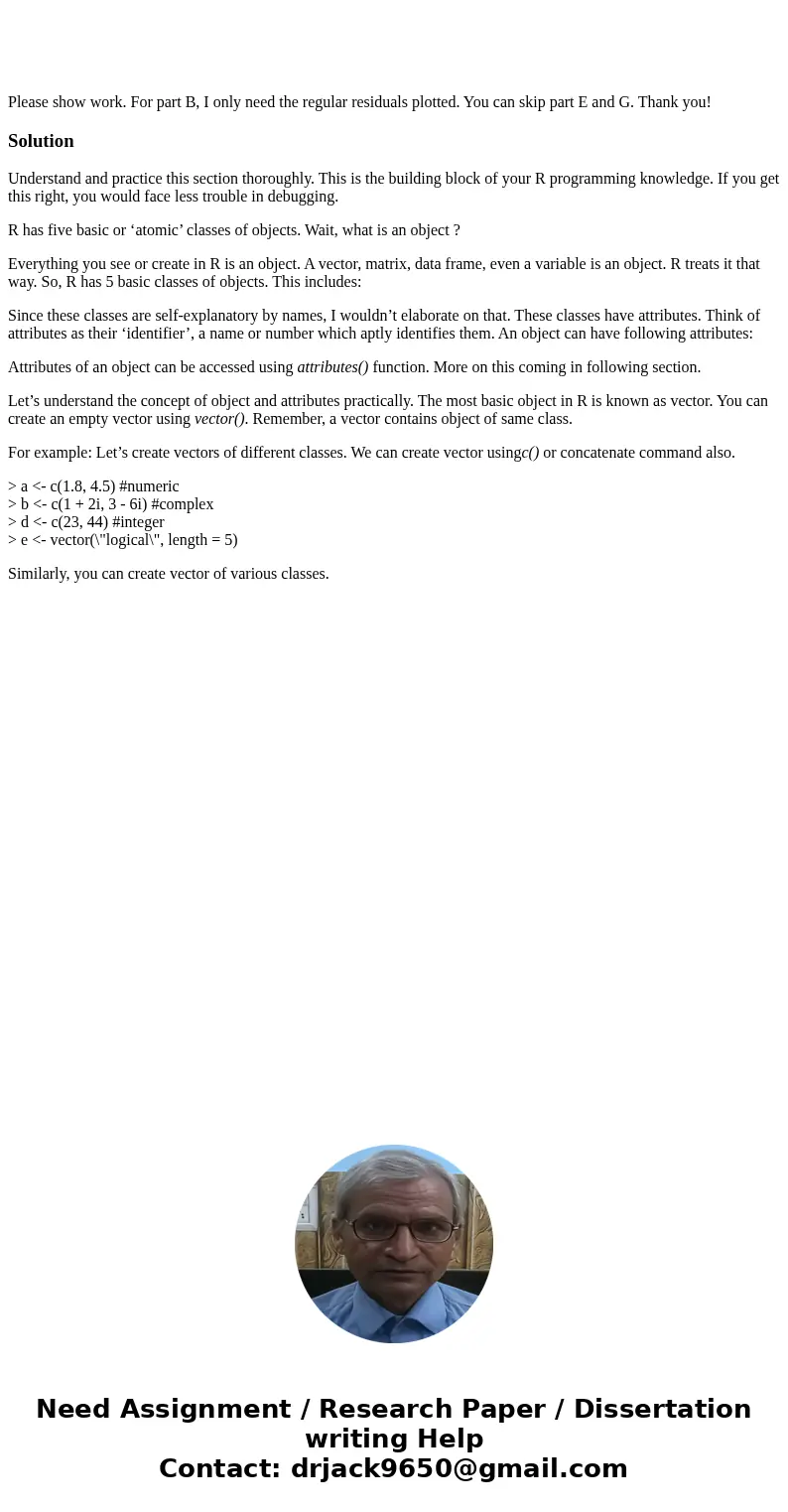Please show work For part B I only need the regular residual
Please show work. For part B, I only need the regular residuals plotted. You can skip part E and G. Thank you!
Solution
Understand and practice this section thoroughly. This is the building block of your R programming knowledge. If you get this right, you would face less trouble in debugging.
R has five basic or ‘atomic’ classes of objects. Wait, what is an object ?
Everything you see or create in R is an object. A vector, matrix, data frame, even a variable is an object. R treats it that way. So, R has 5 basic classes of objects. This includes:
Since these classes are self-explanatory by names, I wouldn’t elaborate on that. These classes have attributes. Think of attributes as their ‘identifier’, a name or number which aptly identifies them. An object can have following attributes:
Attributes of an object can be accessed using attributes() function. More on this coming in following section.
Let’s understand the concept of object and attributes practically. The most basic object in R is known as vector. You can create an empty vector using vector(). Remember, a vector contains object of same class.
For example: Let’s create vectors of different classes. We can create vector usingc() or concatenate command also.
> a <- c(1.8, 4.5) #numeric
> b <- c(1 + 2i, 3 - 6i) #complex
> d <- c(23, 44) #integer
> e <- vector(\"logical\", length = 5)
Similarly, you can create vector of various classes.

 Homework Sourse
Homework Sourse